Wedding traditions are a big part of the wedding process. Everyone does it for different reasons, but how they do the traditions differs. Wedding traditions are different depending on where you grew up. Always wondered what other wedding traditions are out there. Here are some of the most common traditions that most people don’t know about. Check out my other post https://buzz.uni.edu/weddingdays/. For updates about new posts, check out my Facebook https://www.facebook.com/profile.php?id=61566373453986. Enjoy!
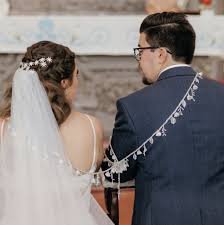
Mexico: Draping a Lasso Around the Couple’s Shoulders
During a Mexican wedding ceremony, while the couple exchanges vows, a lasso is put around their shoulders in the shape of a figure eight. This is because it represents the couple’s eternal bond and their shared responsibilities in marriage. Also, the lasso is often a rosary, silk cord, or flower garland. Then the padrinos (godparents or mentors) often place the lazo, signifying their support and guidance for the couple’s journey.
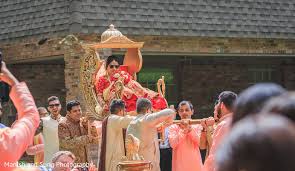
China: Carrying the Bride
In Chinese culture, they believe that if a bride’s feet touch the ground, they will have bad luck. This is because the carrying of the bride represents the symbolic transfer of the bride from her parents’ family to her husband’s. This also marks a new chapter in their life. In addition, the bride’s attendants bring her in on a sedan chair, and shield her with parasols and toss rice at the chair to grant health and prosperity.

France: Cutting a Heart into a White Sheet
The cutting of a heart shape into a white sheet is because it is a symbolic ritual where the bride and groom walk through it. This also symbolizes overcoming obstacles and challenges in marriage. In fact, the heart-shaped cut represents the same symbolism as the ribbon-cutting. In addition, this emphasizes the couple’s ability to overcome challenges together as they embark on their married journey.
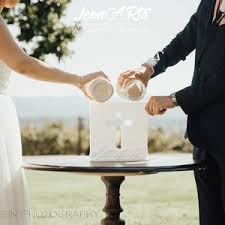
Brazil: Incorporating Natural Elements
Brazilian wedding ceremonies often incorporate natural elements like sand, water, and fire to symbolize different aspects of marriage and love. During the wedding ceremony, they use natural elements in different rituals. Sand symbolizes the merging of two individuals into one by mixing separate containers of sand into one. Water represents purification, and fire is a symbol of love and life.

Germany: Shattering Porcelain
Polterabend is the shattering of porcelain dishes before the wedding. The shattering of these dishes is to drive away evil spirits and bring good luck. The smashing of porcelain and sweeping up the shards symbolizes the couple’s willingness to face challenges together. Polterabend is a festive occasion with music, dancing, and plenty of good food and drinks. An important note to remember is to never break glass during this time because it brings bad luck.
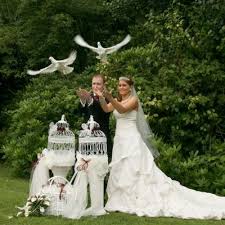
Philippines: Releasing White Doves
Releasing white doves during a wedding ceremony is a tradition in the Philippines that symbolizes peace, unity, and harmonious life together for the newlyweds. The doves have been freed after the ceremony and are a pair, usually a male and female. The doves are being freed from a cage after the ceremony, the couple frees them by pulling a ribbon or cord.
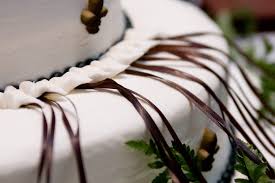
Peru: Participating in the Cake Pull
In the Peruvian wedding traditions, the “Cintas de la torta” or cake pull is a fun and unique way to predict future engagements. Before the cake is cut, ribbons are attached to the base, and single women pull one. One ribbon has a ring and the lucky women who pulls it is believe to be the next to get married. This tradition adds a playful and superstitious element to the wedding reception.

Hawaii: Blowing the Pū
Blowing the conch shell or Pū is a sacred practice that signifies the beginning of a ceremony or the arrival of an important event. The Pū is blown in a specific pattern to summon the elements (earth, air, fire, and water) as witnesses to the ceremony and to honor the gods.It also symbolizes the call ot the divine and the journey of both the couple and the Ancient Hawaiians. The Pū is traditionally blown in the four cardinal directions (East, West, North, and South) to gather the energy of the elements.
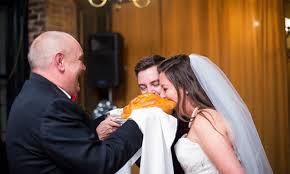
Russia: Sharing Karavay
In a Russian wedding tradition, the bride and groom share a karavay, a sweetbread decorated with symbols of wealth and prosperity to celebrate their new life together. The karavay is a rich symbol with wheat representing prosperity and interlocking rings symbolizing faithfulness. The couple takes a bite without using their hands, and the one who takes the larger piece is considered the head of the family. The karavay is also dipped in salt, symbolizing the shared joys and hardships of marriage.
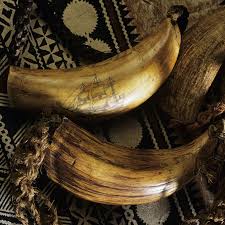
Fiji: Presenting a Whale’s Tooth
In Fijian culture, a whale’s tooth known as tabua is a traditional gift presented by the groom’s family ot the bride’s family as part of a marriage proposal. This act signifies respect, formalizes the marriage request, and is a key part of the dulumi (formal marriage proposal protocol). The tabua is a highly valued item in Fijian society, representing “chiefly things” and used in various important ceremonies.
Leave a Reply